Review Article
Volume 1 Issue 3 - 2017
Dr. Oskar Fischer’s Curious Little Alzheimer’s Germ
New York Institute of Medical Research, USA
*Corresponding Author: Dr. Lawrence Broxmeyer MD, New York Institute of Medical Research, New York, USA.
Received: October 11, 2017; Published: October 17, 2017
Abstract
Alois Alzheimer might have mentioned plaques and tangles in a single short paper on pre-senile dementia in 1907 but it was the co-discover of Alzheimer’s disease, Oskar Fischer, who in that same year far more extensively reported neuritic plaque in 12 cases of senile dementia, a condition which he and many others refused to differentiate from Alzheimer’s “pre-senile” dementia. Fischer, Alzheimer’s great rival, speculated that for the most part these plaques, found only in senile demented patients, caused their dementia. Moreover, Fischer felt such cerebral plaque to be the result of an infection and was very specific as to the sort of infection that might be involved. He felt that he had spotted, throughout his Alzheimer’s brain autopsies, a tubercular-like Actinobacteria then called Streptothrix (Actinomycosis), often and repeatedly confused with the filamentous cell-wall-deficient (CWD) forms of the tubercular bacilli. At this point for Fischer, this was the possible infectious cause of Alzheimer’s. To be sure, Oskar Fischer was the first on record to suggest that chronic infection might be causative for what we today call Alzheimer’s disease. Fischer’s infectious view never gained immediate popularity, although today, more than a century later, a volume of data supporting such an approach has begun to accumulate. But was Fischer’s specific microbe on the right track to discovering the cause of Alzheimer’s to begin with? Documents uncovered since then seem to suggest that he was considerably closer than anyone else –either then or since.
Keywords: Alzheimer’s disease; Infectious Cause of Alzheimer’s Disease; Oskar Fischer; Alois Alzheimer; Neurodegenerative Disease; Neurotuberculosis; History of Alzheimer’s Disease; Actinobacteria; cell-wall-deficient mycobacteria; The etiology of Alzheimer’s disease
Introduction
In June of 2017 a University of Bristol study in the UK found a 5 to 10-fold increase in Actinobacteria (order Actinomycetales) population in post-mortem Alzheimer’s (AD) brains compared with controls [1]. Oskar Fischer’s Steptothrix was an Actinobacteria as well, as was the filamentous tuberculosis that Streptothrix was so often mistaken for. But specifically, the Bristol group found an Actinobactor called Propionibacterium acnes (P. Acnes)in autopsied Alzheimer’s brains –a common organism, traditional felt to be non-pathogenic and commonly found on our skin which can cause, among other things, acne. Yet since much of the present pathology attributed to P. Acnes places it in a category of an opportunistic organism which secondarily infects tissue already damaged through surgery (craniotomy) or secondary to a previous primary infection, the Bristol investigators added this: Additionally, any infection, which initiates the neuropathology of AD, may occur 15–20 years pre-mortem; therefore the bacteria identified here may be due to secondary infection after BBB [blood-brain barrier] breakdown.[ibid 1 p. 10]
And although Streptothrix had always been identified as a rare central nervous system pathogen, its lookalike, tuberculosis, is extremely neurotropic and fully capable of breaching and then entering the brain parenchyma or meninges at the level of this same blood-brain Barrier (BBB) [2]. Furthermore, P. acnes shares similarities with the genome of Mycobacterium tuberculosis. And numerous homologues to virulence factors between these microbes have been found. [3] In fact a quick BLAST search of Propionibacterium acnes genes for 16S ribosomal RNA (GenBank:AB097215.1) against Mycobacterium tuberculosis shows an 88% identity within the first 100 hits.
In addition, Mollerup’s 2016 Journal of Clinical Microbiology review regarding Propionibacterium acne, using similar next-generation sequencing as the Bristol group, cautioned: “Our results show that P. acnes can be detected in practically all sample types when molecular methods, such as next-generation sequencing, are employed. The possibility of contamination from the patient or other sources, including laboratory reagents or environment, should therefore always be considered carefully when P. acnes is detected in clinical samples.”[4]
Rossen said this about species identification (such as the species P. acnes) using next generation sequencing: “when one gets down to the species level such molecular methods need a priori knowledge of the likely pathogenic species that could be present in the sample"[5] This presents the problem of whether candidates such as cell-wall-deficient filamentous forms of a microbe like those of M. tuberculosis would or could through existing known sequences even be considered. They certainly were not in the Bristol University Alzheimer’s brain study.
Nevertheless, if the actual species behind the Alzheimer’s germ could be questioned, the fact that Bristol authors Emery., et al. had detected 5 to 10 times increase in the amount of an Actinobacter of the same class as Oskar Fischer’s Streptothrix could not.
Probably the most influential paper to date on this topic is Mawanda and Wallace’s 2013 review entitled “Can Infections Cause Alzheimer’s Disease”. In that paper, having struck down some of the current commonly entertained pathogens for AD such as herpes simplex virus type 1, Chlamydia pneumoniae, and several types of spirochetes, Mawanda and colleague again suspected a microbe of the same order (Actinomycetales) that Emery and Fischer had probed. Mawanda and Wallace pointed to two prime suspects for Alzheimer’s amyloid-beta deposition, concluding: “especially chronic infections like tuberculosis and leprosy.”[6] Their suggestion seemed within the realm of possibility, with the understanding that leprosy could not be behind most Alzheimer’s disease.
Fischer’s Findings
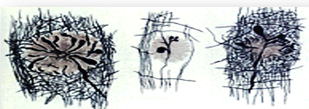
Figure 1: Oskar Fischer's detailed drawings of Alzheimer brain plaque, which here assumes a gray/brown coloring In these, abnormal, club-shaped neurons grow and displace normal-looking fibrils in the space occupied by the plaques. In evidence are the club-shaped, black "drüsen", which extend into this plaque at different stages of plaque development. Fischer found such abnormal club-shaped neurites in approximately 50% of the more developed plaques in Alzheimer’s disease. Such plaque, it was already known, could result from infection with either TB or an actinomycosis (Aktinomycesdruse) like Streptothrix.
The tenth edition of Ziegler’s classical German text, Pathology [7], which Fischer used as a reference, mentions that the actinomycosis like Streptothrix and tuberculosis were so similar that Lubarsch and others insisted that the two be classified together [8]. Choppen-Jones went so far as to propose that tuberculosis be called “tuberculomycosis” [9]. And a 1910 edition of Lippincott’s, cautioned that tubercle bacilli could occur “as small branching complexes resembling the “drüsen” of the actinomyces” [10].
So it becomes all but obvious that Fischer’s 1907 portrayal of Alzheimer plaque as often appearing like bacterial “Streptotriches” had to be weighed within the context that Streptothrix was linked to, confused with, and often indistinguishable from tuberculosis. Therefore, when Fischer found that nearly all brain plaque in the 60 to 80m microscopic range had an appearance reminiscent of “glandular” actinomyces, American bacteriologist Davis mentioned that Fischer’s “glandular” actinomycosis were among the most difficult to differentiate from tuberculosis, saying: “the two are often all but indistinguishable” [11].
By 1907, Oskar Fischer even went to the extent of saying that many of the senile plaques he found “resemble more closely the central cell-free part of a tubercle” [12]. A tubercle, or the tuberculoma it eventually forms, is a small nodule that very often forms in brain tissue after the blood borne spread of miliary tuberculosis. The very title of Fischer’s 1907 paper mentions a tubercular-like “miliary necrosis” of nerve fibrils in the brain in the age-related dementias.
In his papers, Oskar Fischer refers to the minute nodules and granules inside diseased, mature Alzheimer’s plaque as either “drüsen,” “drusige nekrosen” (necrotic drüsen), or simply “miliare nekrosen” (miliary necrosis). The latter term would eventually come to represent cerebral amyloid [13]. In his Pathology text book at that time, Zeigler talked at length about amyloid, seeing it as usually a complication of chronic tuberculosis or perhaps syphilis [14].
It has been known for almost a century that chronic bacterial infections, prominently tuberculosis, were associated with amyloid deposition [15]. In other words, there was a time when it was considered that to have amyloidosis or beta-amyloidosis was to have tuberculosis. It took Divry three decades of knock-down, drag-out struggles before the medical establishment of his day would acknowledge amyloid’s role in the neurodegenerative diseases, including Alzheimer’s. And later, neuropathologist Philip Schwartz of Warren, Pennsylvania, who helped Divry prevail, concluded that despite the invention of “newer” amyloid classification systems, tuberculosis could still safely be considered the most frequent infection that induces the formation of amyloid in human pathology [16].
But just ten years before Oskar Fischer found Actinomycosis-like forms in Alzheimer’s cerebral plaque, Babèş and immunologist Levaditi reported in “On the Actinomycotic Shape of the Tuberculous Bacilli” thattypical Actinomyces-like clusters with clubs [Drüsen] appeared in the tissue of rabbits inoculated with tubercle bacilli beneath the dura mater of their brains [17]. Once introduced into the brain this way, reported Babes, TB bacilli not only branched out like the Actinomycosis such as Streptothrix, but they developed rosettes that were identical to the "drüsen" that Oskar Fischer spotted in Alzheimer’s plaque.
At the time, it was widely acknowledged that such drüsen could result from either infection with Streptothrix, now known as Actinomycosis (aktinomycesdruse), a rare disease in humans which even more rarely affected the central nervous system (CNS), or tuberculosis, a disease that by 1882, as Alzheimer prepared to leave for Berlin for his medical education, was understood to be far and away the leading cause of infectious death in Europe. During Alzheimer’s and Fischer’s lifetimes, tuberculosis’s annual death rate of seven million persons per year was more than twice the approximately two to three million people some estimate it still kills annually [18]. Furthermore, clinically there has always been a subset in adults with cerebral tuberculosis whose clinical features included a slowly progressive dementia over months or years characterized by, among other things, memory deficits [19].
And although Fischer could not validate the specific infectious agent in these plaques and therefore was subsequently forced into his more non-specific view that perhaps the plaques themselves were derived from degenerating neuronal processes, this did not rule out that the plaques were a by-product of an infectious process causing such neuronal degeneration which he, with the technology of his day was simply unable to uncover. Nor did Fischer’s original thoughts as to a specific Alzheimer’s germ escape the attentions of Alois Alzheimer.
Alzheimer Weighs In
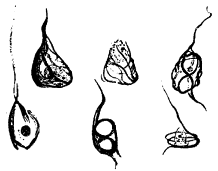
Figure 2: Tangles in the neurofibrils of the brain, drawn by Alzheimer. This was Alzheimer’s signature discovery as opposed to the neuritic plaque in Alzheimer’s uncovered by co-discoverer Oskar Fischer which Alzheimer called “Fischer’s plaque”. However As for Alzheimer’s tangles, Fischer could only find them in from 17 to 21 per cent of his autopsies and could therefore not lend them the importance that he did to plaque in age-related dementia. From ref. 9 in the eighth edition of Kraepelin’s Handbook of Psychiatry. Nevertheless Kaepelin insisted on the name Alzheimer’s disease (E. Kraepelin, Psychiatrie, eighth ed. Vol I: Allgemeine Psychiatrie; Vol II: Klinische Psychiatrie (Barth: Leipzig, Germany, 1909–1910.)
Thus by 1911 Alzheimer wrote the following
Hitherto opinions about the nature of the plaques have been very divergent. Fischer pointed out their similarity to bacterial colonies and reported that he had undertaken cultivation experiments and complement-fixation tests which however produced negative results [20].
Hitherto opinions about the nature of the plaques have been very divergent. Fischer pointed out their similarity to bacterial colonies and reported that he had undertaken cultivation experiments and complement-fixation tests which however produced negative results [20].
But at the time Fischer undertook cultivation and compliment fixation tests to validate his germ, negative results were the rule, not the exception. Alzheimer should have known this. For example, in the same year that Alzheimer made his 1911 statement, Harbitz and Grondahl reported repeatedly negative attempts at running complement-fixation tests in all cases using the serum of patients of known Streptothrix patients [21]. Before that, Woodhead, Director of Laboratories at the Royal College of Physicians, pointed out that any attempted failure to cultivate Streptothrix could easily occur when trying to cultivate Streptothrix with the well-developed club-shaped form of the organism that Fischer repeatedly documented [22]. Thus, the fact that Fischer’s cultivation experiments and complement fixations were negative did not rule out the existence of Fischer’s brain microbe. Even Bostrom succeeded in getting only eleven positive growths out of several hundred Streptothrix planted [23]. And when German investigator Fritzsche addressed this same topic three years before Alzheimer challenged Fischer’s microorganism, Fritzsche found not only a limited number of cases in which complement fixation for Streptothrix proved positive, but, in addition, there were frequent cross-reactions in his meager positive test samples for Streptothrix with tuberculosis [24]. Fritzsche added that Streptothrix was further confused with TB because they both could stain with tubercular acid-fast dyes, and both could have filamentous as well as club-like forms. Bolton later pointed out that unlike TB, Fischer’s Streptothrix rarely involved the central nervous system [25]. Furthermore, although the first case of Streptothrix involving the CNS was reported by Ponfick in 1882 [26], Harz never succeeded in cultivating the organism from there [27]. Most of this literature was readily available to the Alzheimer group.
Moreover, even in the case of using complement-fixation tests to detect the far, far more prevalent tuberculosis, Corper reported as late as 1916 that such tests were positive in only 30 percent of already-proven cases of tuberculosis –whether active or inactive [28].
But Alzheimer refused to acknowledge this. Prompted on by his boss Emil Kraepelin, who in his compendium popularized the term Alzheimer’s disease, Kraepelin made clear to Alzheimer that Alzheimer’s disease, for the sake of their Clinic must be considered a new disease. If the disease was caused by Fischer’s Streptothrix or another existing infectious agent such as tuberculosis, then how could it be considered new?
Thus Alzheimer’s constant reference to the uniqueness of the disease named after him despite the protests of Speilmeyer that there was nothing new about Alzheimer’s disease and that it was merely a form of what Oskar Fischer referred to as basically impending senile dementia. Simchowitz, first to use the term “senile plaque,” wrote in 1914 that there was no difference between Alzheimer’s disease and Fischer’s senile dementia. [29] And in a 1916 review, Speilmeyer, who would eventually replace Alzheimer at Munich, revealed that even Alzheimer himself knew that the presenile decline he had “discovered” in people in their late forties, fifties, and early sixties was nothing really new. [30] It was simply what Fischer had already characterized with somewhat of an earlier age of onset, at a time when certain pathologic findings were more prominent in the disease’s cycle.
Yet in Alzheimer’s very first presentation of his disease, given at the University of Tübingen, and which layed out the case history of his first Alzheimer’s patient, Auguste Deter, Alzheimer nevertheless insisted [31]:
“Clinical observation alone made the case appear so unusual that it could not be classified as one of the recognized illnesses; it showed anatomical characteristics which set it apart from all recognized cases.”
This wasn’t entirely true either. First, there was very little that set the anatomical characteristics of Alzheimer’s findings apart from senile dementia. Second, by 1830, Papavoine had already described “plaques” in the brain, associated with systemic tuberculosis present either in or outside the brain [32]. And as for the location where Papavoine noticed such plaques, they were in the brain’s pia mater, the innermost of the three coverings of the brain called the meninges. This was the very area in which neuropathologist Perusini, [33] who by 1910 was Alzheimer’s go-to pathologist, showed alterations similar to Papavoine’s pial changes in all four of his Alzheimer’s autopsies. In addition, approximately ten years before Alzheimer wrote about Deter, Ludvig Hektoen, former editor of The Journal of Infectious Diseases, was already defining many of the same vascular changes in neurotuberculosis [34] of the brain that Alzheimer and Perusini now documented as an integral part of their “new” disease.
In fact, at the very time that Alzheimer autopsied Deter’s brain, German investigators [35-37] were issuing voluminous literature defining a constellation of tubercular signs, symptoms, and tissue findings, many of which Deter actually had. These included failure of memory, auditory hallucinations, delusions, incoherence, delirium, loss of the ability to use words, incontinence, and hydrocephalus. Yet Alzheimer persisted in his seeming ostrich-like approach, burying his head in the sand, insisting on Alzheimer’s disease as a “peculiar disease process [which has been] verified recently in large numbers.” And this was a statement made at a time when tuberculosis’s annual kill rate was an incredible seven million persons per year-threatening the very existence of civilized Europe. In response, Germany, with its back against the wall, facing a disease whose bacillus had been found but whose cure had not, began to churn out one TB sanatorium treatment center after another. And so it was, that as Alois Alzheimer pursued his clinical and laboratory duties, there was hardly a single large township or district in all of Germany that had not constructed its own open-air, hygienic-treatment tubercular sanatorium for its “consumptives” [38].
Alzheimer continued to speak about the pathology he had found in Alzheimer’s disease
Very remarkable and really without precedent in the pathological anatomy of the nervous system are the alterations of [brain neuron] axis-cylinders [the central core of the axon of in this case brain neurons], so exhaustively described by Fischer [39].
Very remarkable and really without precedent in the pathological anatomy of the nervous system are the alterations of [brain neuron] axis-cylinders [the central core of the axon of in this case brain neurons], so exhaustively described by Fischer [39].
But, in reality, again, nothing was mentioned “without precedent.” True, Fischer, Alzheimer’s great European rival, was credited with establishing senile dementia, which he felt was part and parcel of Alzheimer’s disease and exhaustively worked on the alterations in axon cores in Alzheimer’s. Yet Barlow [40], in describing neurotuberculosis seven years prior to Alzheimer and Fischer’s work, gave his own explanation for such tubercular “tangles” and “plaques”:
“Microscopic investigations throws some light upon this condition [tubercular meningoencephalitis]: the deposition of miliary tubercle in the subarachnoid, and along the ingrowing processes of pia mater, not only interferes with the vascular nutrition of the brain substance, but actually invades it, giving rise to extensive cellular infiltration, and causing degeneration of both axis-cylinders [of brain neurons] and ganglion cells. This seems to justify the modern designation of the disease as a true [tubercular] meningoencephalitis” [40].
In his fifth edition of the Pathologic Basis of Disease, Robbins [41] used the term “diffuse chronic meningoencephalitis” as the most common pattern of tubercular involvement of the brain. There Robbins acknowledged that its symptoms could vary greatly, ranging from simply chronic or intermittent headache with subtle mental changes to full-blown meningitis. As early as 1911, German physician/investigator Roepke, and Otto Ranke before him in 1908, emphasized that cerebral tuberculosis was not necessarily a death sentence and that often it was simply a matter of such small, multiple blood borne tubercles landing in a particular area in the brain, usually early in life. Arnold Rich, head of pathology at Johns Hopkins, would confirm this decades later [42].
It is improbable that Alois Alzheimer did not read and absorb the parallels between Ranke’s work on central nervous system tuberculosis and his own histological findings on Auguste Deter’s brain. In 1904, Alzheimer and his lifetime friend, Franz Nissl, began to jointly edit the journal Histologische und histopathologische Arbeiten uber die Grosshirnrinde –a publication Ranke’s TB meningitis review was accepted into and then published in 1908. Ranke’s paper also cited the experimental work of Kure, who, while working in Nissl’s laboratory in 1898, produced experimental tuberculous meningoencephalitis by drawing cotton threads impregnated with tubercle bacilli through the brains of dogs.
Despite such knowledge of possible linkage between cerebral tuberculosis and Alzheimer’s disease –an association implied not only by Alzheimer’s German and European colleagues but subsequently by Southard at Harvard and Clouston at Edinburgh; and despite the seven million deaths per year from a tubercular disease that led to TB sanatoria sprouting up like weeds all around him –Alzheimer’s silence was singular.
Harvard’s EE Southard: America’s Leading Neuropathologist
By 1910 –within three years of Alzheimer and Fischer’s initial papers, Elmer Ernest Southard, Harvard professor of neuropathology, released his own paper on senile and Alzheimer’s presenile dementia [43]. In that paper, Southard put Alzheimer and Fischer on notice that with regard to age-related dementia, his autopsy of forty-two cases of what we now call Alzheimer’s disease showed that the vast majority of cases had findings suggestive of tuberculosis –as a rule dormant, obsolescent, and acquired earlier in life. Furthermore, Southard reported straightforwardly that general tuberculosis could “scarcely be excluded with safety from any case” in his experience autopsying the age-related dementias. [41] In addition, Southard, an expert on the pathology of neurosyphilis, found no one-on-one linkage between neurosyphilis in either Alzheimer’s or senile dementia [44].
Kraepelin and Alzheimer’s response to Southard’s work was to ignore it. But Southard, regarded as the leading neuropathologist in the United States, was difficult to ignore, even for Germany’s most ardent psychogenicist and psychiatric classifier-in-chief, Emil Kraepelin.
Kraepelin knew Southard’s tubercular/dementia reference well, made more than familiar to him through the publications of still another one of Kraepelin’s rivals, England’s T. S. Clouston. In his memoirs, Kraepelin mentions Clouston’s visit to Munich. Kraepelin:
Englishmen rarely came to visit, amongst the more well-known colleagues, Clouston came to visit [45].
Sir Thomas Smith Clouston
Clouston was “well-known,” indeed. In fact, his fame at that time easily rivaled Kraepelin’s. Of the two benchmark events chronicled to this day in medicine for 1883, Thomas Clouston’s publication of Clinical Lectures on Mental Diseases sits side-by-side with Emil Kraepelin’s Compendium der Psychiatrie. Clouston was appointed Lecturer on Mental Diseases at the prestigious University of Edinburgh, a post he held in conjunction with his position as head of the noteworthy Royal Edinburgh Asylum. A celebrated lecturer, Clouston gained international notoriety for his explanation of the psychiatric disorders of adolescence. Publishing extensively, Clouston began with his remarkable Clinical Lectures [49], followed, later, by his more popular Unsoundness of Mind [46].
Clouston was “well-known,” indeed. In fact, his fame at that time easily rivaled Kraepelin’s. Of the two benchmark events chronicled to this day in medicine for 1883, Thomas Clouston’s publication of Clinical Lectures on Mental Diseases sits side-by-side with Emil Kraepelin’s Compendium der Psychiatrie. Clouston was appointed Lecturer on Mental Diseases at the prestigious University of Edinburgh, a post he held in conjunction with his position as head of the noteworthy Royal Edinburgh Asylum. A celebrated lecturer, Clouston gained international notoriety for his explanation of the psychiatric disorders of adolescence. Publishing extensively, Clouston began with his remarkable Clinical Lectures [49], followed, later, by his more popular Unsoundness of Mind [46].
But in far-off Scotland, where he read about Deter, Thomas Clouston could not in any way agree with Alzheimer's thoughts or conclusions. To Clouston, Deter represented neither the "new disease" implied by Alzheimer's boss Kraepelin nor what Alzheimer referred to as "a peculiar, little-known disease process" [47].
Both Alzheimer and Clouston would soon hold international reputations, each considered a pioneer in the treatment of mental illness. Yet for the life of him, Clouston thought the psychiatric history of the gaunt, suspicious, hallucinatory, paranoid-like Auguste Deter an open-and-shut case of what he often referred to in his lectures at Edinburgh University as "monomania of suspicion". Clouston said this: This is a good example of those cases of pure monomania of suspicion, almost all of whom, according to my statistics, die of tuberculosis. [48] As for the more demented cases such as Deter's, with her incapacitating memory loss, Clouston noted: This happens in about 30 per cent of cases. It is the event we most dread. It is the equivalent to a mental death [49].
So common was the knowledge at Alzheimer’s time that tuberculosis (TB), in any form, whether inside or outside of the central nervous system, could lead to memory loss –some of it severe and progressive –that Clouston was just amazed at the exquisite lengths and efforts that Alzheimer and his boss, Kraepelin, went to in totally ignoring it. The fact that central nervous system tuberculosis could masquerade as age-related Alzheimer's dementia with severe memory loss was documented and still is to this day [50].
Clouston maintained that since TB's psychiatric symptoms and dementia appeared long before the disease itself advanced to any great degree, many patients committed with TB were being sent to asylums instead of special hospitals for the treatment of the disease. Carpenter, in a 1903 review in The Journal of the American Medical Association, found Clouston's opinions not only justified but "a decisive etiologic [causative] factor" [51] in any discussion of a subset of all asylum populations, including the one Auguste Deter now found herself in. Clouston said that tubercular patients tended to be demented before death much more than the non-tubercular. Furthermore, in the majority of cases of dementia, whether presenile or senile, Clouston found tuberculosis upon autopsy after death –provided it was looked for adequately. The only problem was, according to Clouston, that nobody, including Kraepelin and Alzheimer –and with the exception of Southard at Harvard –was adequately doing so.
Forbes Winslow of Sussex House, Hammersmith, a former President of the Royal College of Psychiatry, had documented what neurotuberculosis could do to the mind in a clear and methodical way. Winslow presented cases [52] of severe mental loss at the hands of neurotuberculosis. Among them was a gentleman, aged 54, who worked as a principal in a fairly large school and who died of "softening of the brain", as his tubercular disease choked off vital blood supply to that portion of the brain. This man, who was Deter's age, had admitted at the time to his medical attendant that his mind was “gradually fading away from him", yet he carried on, occupying himself with his usual workday duties-until one day he could not. Winslow said this:
Immediately retiring to his own private room, he seated himself in a chair, burst into a flood of tears, exclaiming, in wild despair, "My mind is gone! Altogether gone!" [ibid., p. 327)
In this case, no symptoms of physical (tubercular) disease of the brain were detected until 12 months before death. In another case, a retired army officer's mind appeared to gradually fade away and succumb to a mysterious influence. Only after death did the reason become apparent. The dura mater of his brain was riddled with tuberculosis, his brain much shrunken and, in some portions, was in a softened state. In this instance, there were no delusions or other symptoms of mental abnormality until a year-and-a-half before death.
In a study of 282 cases, Clouston [53] insisted that tubercular psychiatric disease had nothing to do with asylum conditions because it was often present in newly confined cases.
Nor, said Clouston, did long-term confinement for a condition like age-related dementia lend itself more to tuberculosis than any other disease that afflicted humans. In addition, he cautioned that in up to one-third of cases in the demented and mentally afflicted, their tuberculosis could be entirely latent and asymptomatic, again leading to tuberculosis’s gross underestimation, both in mental institutions and among the demented.
Neuropathologist Dr. Philipp Schwartz
Physician/neuropathologist Philipp Schwartz studied medicine in Budapest and earned his doctorate there in 1919, approximately five years after Alois Alzheimer died. In that same year, he became an assistant of Bernhard Fischer at the Senckenberg Institute of Pathology at the Goethe University Frankfurt, where he worked for the next 14 years. This was the very same Senckenberg Institute that Alois Alzheimer had previously worked under director Karl Weigert, the inventor of aniline staining. Weigert was also credited with the discovery of vascular tuberculosis, and was the first to demonstrate how tubercular material could enter the bloodstream [54]. At that time, older pathologists regarded the blood-vessels, including those in the brain as immune to tuberculosis. Weigert’s observations put a quick end to such thoughts. Ludvig Hektoen [34] quickly followed with a monogram on tuberculous endarteritis that covered many of the changes of the subsequent cerebral blood vessel findings in Alzheimer’s by Perusini for the Alzheimer’s group [55]. Weigert’s findings however, which were critical to the conceptualization of among other things, cerebral tuberculosis, seemed to be taken much more seriously by Philipp Schwartz then by Alois Alzheimer.
Physician/neuropathologist Philipp Schwartz studied medicine in Budapest and earned his doctorate there in 1919, approximately five years after Alois Alzheimer died. In that same year, he became an assistant of Bernhard Fischer at the Senckenberg Institute of Pathology at the Goethe University Frankfurt, where he worked for the next 14 years. This was the very same Senckenberg Institute that Alois Alzheimer had previously worked under director Karl Weigert, the inventor of aniline staining. Weigert was also credited with the discovery of vascular tuberculosis, and was the first to demonstrate how tubercular material could enter the bloodstream [54]. At that time, older pathologists regarded the blood-vessels, including those in the brain as immune to tuberculosis. Weigert’s observations put a quick end to such thoughts. Ludvig Hektoen [34] quickly followed with a monogram on tuberculous endarteritis that covered many of the changes of the subsequent cerebral blood vessel findings in Alzheimer’s by Perusini for the Alzheimer’s group [55]. Weigert’s findings however, which were critical to the conceptualization of among other things, cerebral tuberculosis, seemed to be taken much more seriously by Philipp Schwartz then by Alois Alzheimer.
From 1953 Schwartz worked as a pathologist at the Warren State Hospital in Pennsylvania and chaired a research department there. In 1957 he was formally reinstated as a Professor at the once Nazi-run Goethe University.
As he read Oskar Fischer’s turn-of-the-century study in the 1970s, nothing, including Fischer’s referencing a tubercle, and the “miliary” tubercular-like distribution of Alzheimer’s brain plaque, seemed out of order to Pennsylvania neuropathologist Philip Schwartz. Nor could he find any fault in Southard’s Alzheimer’s autopsy conclusions at Harvard or Clouston’s original research implying Alzheimer and the senile dementias as being a result of old and mostly dormant foci of TB. Rather, Schwartz’s findings were comparable. Schwartz made this observation:
Chronic infections, and particularly tuberculosis, have heretofore been regarded as the most frequent and therefore the most important cause of systemic amyloid degeneration. This fact induced us to look for sequels of pulmonary tuberculosis in around 150 cases of senile and presenile [Alzheimer’s] amyloidosis. Postmortem roentgen photography, as well as careful macroscopic and histologic examination of the lungs, disclosed typical calcifications of healed intra-pulmonary or lymphoglandular tuberculous infiltrates in almost every instance of this series, and quite often typical cicatrices of old lymphonodular bronchial lesions. Doubtless, the great majority of our senile and presenile patients displaying cerebral amyloidosis, suffered from pulmonary tuberculosis sometimes before symptoms of senile deterioration arose [56].
One of the main reasons why Dr. Philip Schwartz could go where few had gone before him was his introduction of a critical method, still used today, whereby the flourochrome dye Thioflavin-S lit up amyloid deposits, both in humans and animals. Using this process, Schwartz proceeded to fashion the textbook Amyloidosis: Cause and Manifestation of Senile Deterioration –which stands as a monument to the course that solid basic research on Alzheimer’s and the amyloid neurodegenerative disorders could have taken.
Neurosyphilis had diminished to a point of rarity, and Schwartz saw amyloidosis –both “primary” (supposedly noninfectious) and secondary (infectious) –in the brain and elsewhere, mostly as the by-product of underlying infectious tuberculosis, usually dormant. Such infection could then, with time or age, either reactivate itself or be reactivated by a host of traumatic, chemical, biologic, or physical insults. He had autopsied hundreds of cases. In each case, animal or human, he documented plaque in the brain, accompanied by the amyloid degeneration of nerve fibrils as a result of systemic infection.
Schwartz injected M. tuberculosis into the peritoneal sac of twenty-two guinea pigs, all of whom died within twenty-eight to ninety-six days [16]. All but four exhibited amyloidosis. Yet only one of his control animals came down with amyloidosis. With his guinea pig experiment, Schwartz supported the findings of Hass, who in a large series of rabbits found that three out of every four animals developed amyloidosis within fifteen days of being infected with bovine tuberculosis. Furthermore, the injection of tuberculin into Haas’s animals only hastened the development of amyloidosis [57].
In his multipart amyloid study for the Archives of Pathology, Hass and his colleagues made this conclusion:
In the present investigation, the only infectious disease which served as an apparent cause of amyloidosis was tuberculosis. [57, p.228]
All twenty-one of Hass’s human subjects with amyloid disease had chronic pulmonary tuberculosis due to the human tubercle bacillus.
Philip Schwartz continued to see theoretical discrepancies all about him.
Supposedly, it was out there that the vast majority of Alzheimer’s (AD) cases –more than 95 percent –have no defining genetic factor and were considered sporadic, or late-onset. On the other hand, early-onset or familial AD (FAD) referred to a small subset of patients with a supposed genetic component. However, both familial and sporadic forms displayed the same cellular pathological characteristics: amyloid plaques, composed of Aβ peptides; and neurofibrillary tangles. This suggested that they are one and the same and arose through similar mechanisms. Frecker, Pryse-Phillips, and Strong, in the Canadian Journal of Neurological Science, saidthat adult exposure to tuberculosis appeared to be a major risk factor for familial dementia of the Alzheimer-type patients. Necessarily, their study also concluded that such TB exposure might be of further relevance in subgroups of nonfamilial Alzheimer patients as well. [58]
Despite claims otherwise, Schwartz knew that bacteria were powerful inflammatory stimulators and that chronic bacterial amyloidosis was the most common form of human systemic amyloidosis worldwide. He summed things up accordingly: “It seems that no one who lives long enough escapes it.” [56]
Schwartz steadfastly stood by Divry when Divry was in a decades-long struggle against the medical authorities that amyloid was in fact instrumental in the age-related dementias. Yet as late as 1967, just three years later, an editorial in the Journal of the American Medical Association concluded that “Amyloid disease will never enjoy more than casual clinical importance.” [56, p. vii]
Schwartz chaffed at JAMA’s inference
“Our investigations have disclosed amyloidosis to be one of the most frequent diseases of the human species, and cerebral amyloidosis, because of its enormous incidence in the aged, to be the most important condition in neuropathology.” And since Schwartz had repeatedly documented “Extinct or still active sequels of pulmonary tuberculosis present in almost every case of senile deterioration investigated postmortem”, [56 p 363] his conclusion was inevitably that there was an indelible linkage between Alzheimer’s and systemic tuberculosis.
“Our investigations have disclosed amyloidosis to be one of the most frequent diseases of the human species, and cerebral amyloidosis, because of its enormous incidence in the aged, to be the most important condition in neuropathology.” And since Schwartz had repeatedly documented “Extinct or still active sequels of pulmonary tuberculosis present in almost every case of senile deterioration investigated postmortem”, [56 p 363] his conclusion was inevitably that there was an indelible linkage between Alzheimer’s and systemic tuberculosis.

Figure 5: Amyloidosis. Slide A shows section of the liver stained with Congo red revealing deposits of amyloid in the walls of blood vessels and along sinusoids. In slide B, note the birefringence of the deposits when observed by polarizing microscope.
This seemed to be borne out by the fact that amyloidosis associated with tuberculosis had long been known to undergo remission and disappear when the chronic tubercular infection has been eliminated [59].
The Investigative Trail Continued
Tübingen is a traditional university town in central Baden-Württemberg, Germany. It was not only one of the cities that Alois Alzheimer studied medicine, but on Saturday, November 3rd, 1906, Alzheimer traveled from Münich, where he then lived and worked, to Tübingen. There, Alzheimer presented his first, signature case of the disease that his boss Emil Kraepelin would later name in his honor, the case of Auguste Deter.
Tübingen is a traditional university town in central Baden-Württemberg, Germany. It was not only one of the cities that Alois Alzheimer studied medicine, but on Saturday, November 3rd, 1906, Alzheimer traveled from Münich, where he then lived and worked, to Tübingen. There, Alzheimer presented his first, signature case of the disease that his boss Emil Kraepelin would later name in his honor, the case of Auguste Deter.
Ironically then, by 2004, almost one hundred years after Alzheimer’s first AD presentation, German scientists, working mere blocks away from where Alzheimer gave his talk, established that the renegade protein called “tau” could be generated in the brains of laboratory animals inoculated with tubercular elements [60]. Julius Freund’s Complete Freund’s Adjuvant (CFA), when injected into mice, showed widespread ß-amyloid plaque in the cerebral cortex and hippocampus –the part of the brain that is involved in memory –and within just four months of their being injected.
If normal tau protein nourished a neuron’s axon, the abnormal “hyperphosphorylated” tau after mycobacterial attack formed sticky clumps, much like what happened with Alzheimer’s beta-amyloid plaque, resulting in the death of the neuron. Tuberculosis itself contained a phosphatide fraction with 3 percent phosphorus and has the ability to phosphorylate CNS tissues, including neurons [61]. Not only did TB produce the same protein phosphorylation [62,63] seen in autopsied Alzheimer’s brains [64], but the very same inflammatory neurotoxic proteinase and cytokines instrumental in the creation of beta-amyloid plaque, tau aggregation, and neurofibrillary tangles in Alzheimer’s [65] are operative and found elevated also in the phosphorylated tissue specimens from patients with CNS tuberculosis [61].
Unlike other meningitis-causing bacteria, M. tuberculosis does not enter the cerebrospinal fluid (CSF) directly through the blood-CSF barrier at the level of choroid plexi. Instead, it enters the brain parenchyma or meninges at the level of the Blood Brain Barrier (BBB) [2].
In addition, Alzheimer’s and tuberculosis share a common site of origin: the base of the brain. This predisposition for tuberculosis to affect the base or bottom of the brain makes its initial attack unlike any other intracranial infection –including dementia caused by neurosyphilis, where the chief pathological changes are found in the substance of the cerebral hemispheres. With time, it became obvious that Alzheimer’s genesis, more often than not, also first affected brain structures close to, or at the base (or bottom) of the brain. By the same token, since 1901, Vigouroux’s study [66] revealed the all too familiar basilar pathology of tuberculosis at the bottom of the brain, a location of early attack that appears in countless studies, including those of Kirman [67], Marchand [68] and on to the present day.
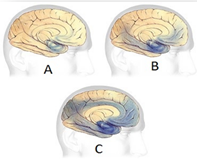
Figure 6: Plaques and tangles in Alzheimer’s (shown in the shaded areas inside the cranium) tend to spread through the cortex in a predictable pattern as Alzheimer's disease progresses. The rate of progression varies greatly. Note that the disease begins (A) toward the base or bottom of the brain, fanning out from that point across the convexity of the cortex (B and C).
One of the structures near the base, or bottom, of the brain is the hippocampus, critical to Alzheimer’s neuropathology. If the surface of the cerebral hemispheres is regarded as a sphere with a broad-based indentation on its bottom, then one of the structures that lines the edge of this hollow depression on that bottom is the hippocampus.
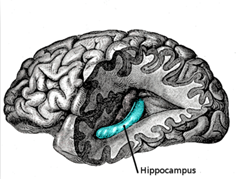
Figure 7: The human hippocampus. Although the gross visual examination of the Alzheimer’s brain is not diagnostic, a typical early symmetric pattern of cortical atrophy predominantly affects the human brain’s medial temporal lobes. One side of a lobe has been cut away here to show its underlying hippocampus.
The hippocampal region, located in the medial temporal lobe, is responsible for storing new information and memory formation. It is affected early and often in Alzheimer’s.
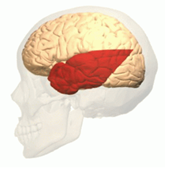
Figure 8: The medial temporal lobe, which here assumes the shape of an arrowhead in the middle of this picture-a region critical for memory.
Besides, the hippocampal region the medial temporal lobe also consists of structures that are vital for long-term memory. The hippocampus is crucially important for memory formation, but its surrounding medial temporal cortex is currently theorized to be critical for memory storage [69].
Prominent atrophy, or wasting away, of this memory region is usually observed early on in both Alzheimer’s and tuberculosis. Pando [70] and others documented that in a full-scale tubercular attack on the same region, neurons in the hippocampal area showed significant damage, eaten away through necrosis and extensive gliosis. Certainly, thought Pando, the possibility of such tubercular targeting of the hippocampal area should be considered in memory or cognitive disturbances.
Furthermore, the middle cerebral artery supplies most of the blood to the temporal-lobe origins of Alzheimer’s.
Something was being brought into the Alzheimer’s brain through the middle cerebral artery, blood-borne and infectious enough to spread –the same middle cerebral artery (MCA) that together with its branches are the most common vessels in the brain infected by neurotuberculosis [71]. Although many other vessels in the brain can be diseased, the vessel that is infected by cerebral tuberculosis most commonly is this MCA and its branches, the favored portal of entry. It is precisely because of such preferred middle cerebral artery transport that tubercles most frequently land first and are housed in the lateral and medial aspects of the temporal lobes –the same medial temporal lobe that accommodates the early instigation of Alzheimer’s disease. There Alzheimer’s begins to weave its web of amyloid plaque, neurofibrillary tangles, and ischemic infarcts (“strokes”) typically found on autopsy in approximately 20 percent of Alzheimer’s victims [72]. A comparable percentage of strokes (23 percent) were recorded from patients with cerebral TB [73].
A distinctive characteristic of infection with M. tuberculosis, a disease that according to WHO (the World Health Organization) affects a third of the world, is its capacity to enter and replicate within macrophages in the blood. Within the brain, microglial cells are the resident macrophages. As such, human microglial cells are productively infected with M. tuberculosis and are, in fact, its principal target in the CNS [74-76].
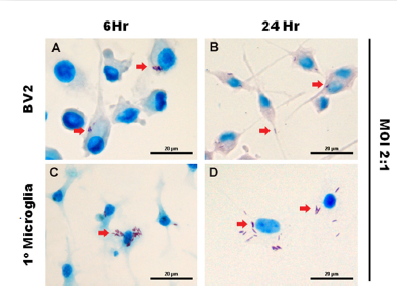
Figure 10: M. tuberculosis infects microglia. The microglial cell line BV2 (A and B) and primary microglia (C and D), isolated from human brain cortex infected with M. tuberculosis at an MOI of 2:1 for 6 and 24h. The arrows indicate the uptake of acid-fast bacilli by the microglial cells. Scale bars, 20 µm. Note in D the retraction of microglial processes after being infected with TB for 24 hours. [From Randall PJ, Hsu NJ, Lang D, Cooper S, Sebesho B, Allie N., et al. Neurons are host cells for Mycobacterium tuberculosis. Infect Immun. 2014 May; 82(5): 1880-90], with permission.
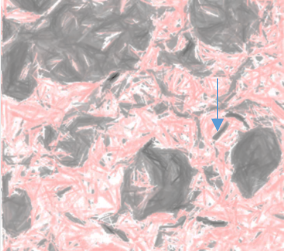
Figure 11: Circling in for the kill. Numerous tuberculous bacilli-relatively straight, rod-shaped bacilli (see arrow)-invading the cytoplasm of microglial (glial) cells from the base of the brain (1000x magnification).
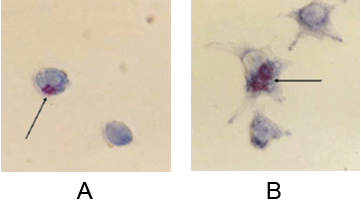
Figure 12: TB infecting microglia. (A) Taken after thirty minutes of tubercular Infection, followed by (B) at eighteen hours, which shows the retraction of microglial processes (1000x magnification).
And just as the microglia are TB’s principal target in the brain, microglia themselves are central to the response to the brain’s response to fight cerebral TB [77]. Once infected, microglia can then serve as a reservoir of tuberculosis, surviving and possibly creating a pool or source of infection for further tubercular attack in the brain [74]. For all of these reasons, microglia have emerged as being key to understanding the neuropathogenesis of tuberculosis in the CNS. When TB attacks and infects the microglia in the brain, unlike most pathogens, it at first resides quite comfortably in the microglia’s cytoplasm within round, fluid-filled vacuoles, surviving and multiplying. Thus, TB and fowl-TB (avian tuberculosis) create their own cerebral infectious reservoirs. A short time later in such tubercular infection of the microglia, there is a retraction of the microglial processes. Tuberculosis will now direct a frontal offensive toward the brain’s immune system, its virulent strains looking to inhibit the very defensive microglial cytokines that are so deadly to most other microbes [78].
Conclusion
For some time now much has been made as to how Alzheimer’s amyloid and bacteria trigger the same immune response. [79] Certain bacteria produce ‘curli proteins’ that allow bacteria to stick to host tissue and to each other to form colonies. Curli fibers are morphologically identical in form and structure to the amyloid fibrils found in Alzheimer’s plaque even if they have nothing in common in their amino acid sequences. What Oskar Fischer first identified holds true to the present: Alzheimer’s plaques may look like colonies of bacteria. If this were the case it would result in the chronic inflammation seen in Alzheimer’s that damages neurons. And although germs like Salmonella and E. coli can also create curli fibers, it is the mycobacteria which can do so in a more chronic fashion.
Alteri., et al. showed that M. tuberculosis produces outer fringelike bacterial amyloid structures called fimbriae or pilli on its surface which also bind Congo red dye, a property associated with human amyloidosis. Such beta-amyloid TB manufactured pilli have crucial roles in infection, one of which is to allow tuberculosis to adhere to or sticking onto the targeted body’s immune cells, whether they be macrophages in the blood or the microglia [neuroglia] in the nervous system that tuberculosis intends to attack [18]. Electron microscopic analysis of these M. tuberculosis pili (MTP), shows fibers that are strikingly similar to so-called amyloid curli fibres of E-coli, known to be identical with the Beta-amyloid of Alzheimer’s. So important are these amyoid fibers to TB that they are a recognized virulence factor, that mechanism whereby tuberculosis can colonize the neuroglia in the brain and central nervous system, which in turn can act as their reservoir to spread infection. Moreover Jordal confirmed that tubercular Mycobacteria produce a level of amyloid not previously described for any bacteria [80].
Recently in 2017, UK scientists found that the brains from the Alzheimer's patients had seven times more bacterial genetic sequences than the brains of the people who didn't have the disease [1]. Much of this difference was due to the Alzheimer's patients having higher levels of bacteria belonging to a family called Actinobacteria. This was the same class of bacteria that Oskar Fischer thought was behind Alzheimer’s disease. The Bristol group, however had settled upon the Actinobacter species P. acnes while Fischer’s Actinobacter was Streptothrix, a germ known to be almost identical to the cell-wall-deficient filamentous forms of M. tuberculosis, another Actinobacter.
Emery and colleagues mention that since the infection behind the neuropathology of Alzheimer’s may occur 15-20 years pre-mortem, that the Actinobacter species they isolated (P. acnes), might have been a secondary infection after blood-brain barrier breakdown. Yet few organisms approach the adeptness of breaching and entering this blood-brain barrier with the adeptness of another Actinobacter called tuberculosis –especially its brain seeking, neurotropic cell-wall-deficient forms. Insanov showed that cell-wall-deficient forms in tuberculosis meningitis accounted for an incredible 87.6 percent of the tuberculosis found in children with TB meningitis and 87.3 percent of those in adults. [81]
Rossen cautioned that when it comes down to species identification (such as P. acnes among the Actinobacteria) using next generation sequencing that some “a priori knowledge” of the likely pathogenic species that could be present in the sample was required [5]. But did the Bristal team in the UK suspect a priori that cell-wall-deficient (CWD) forms of mycobacterial actinomyocytes could be in the sample, as it certainly wasn’t probed for. By far the preferred form of M. tuberculosis is its cell-wall-deficient form which it almost always reverts to when infecting macrophages or microglia. But could next generation sequencing properly identify cell-wall-deficient forms? Where they in the databank of known sequences?
Could this be a flaw in the current state of next generation sequencing or merely not considering CWD forms? Also, could they be spot on correct regarding the family Actinobacteria and wrong with the particular species of Actinobacteria they settled on?
There were problems in assigning either Streptothrix or P. acnes as the species causing Alzheimer’s. Both are rarely present as an infection in the CNS. Basically Propionibacterium acnes is an opportunistic organism with little or no invasive potential. Primary infections are apparently quite rare. The organism is typically introduced by craniotomy or piercing head trauma, but that history may lie buried in the distant past [82].
The search for Actinobacteria in the Alzheimer’s brain, which includes Dr. Oskar Fischer’s curious little Alzheimer’s germ, is probably far from over. And as diagnostic testing and technology behind that testing becomes better there is also little doubt that more definitive answers will emerge. But it is only by building on the work of the past that we can uncover the enigmas of the present.
References
- Emery DC., et al. “16S rRNA Next Generation Sequencing Analysis Shows Bacteria in Alzheimer’s Post-Mortem Brain”. Frontiers in Aging Neuroscience9 (2017): 195.
- Be NA., et al. “Pathogenesis of Central Nervous System Tuberculosis”. Current Molecular Medicine9.2 (2009): 94-99.
- Bhatia A., et al. “The Infectious Etiology of Chronic Diseases: Defining the Relationship, Enhancing the Research, and Mitigating the Effects: Workshop Summary”. National Academies Press (US) (2004).
- Mollerup S., et al. “Propionibacterium acnes: disease-causing agent or common contaminant? Detection in diverse patient samples by next-generation sequencing”. Journal of Clinical Microbiology55.10 (2017): 980-987.
- Ruud H., et al. “Application of next generation sequencing in clinical microbiology and infection prevention”. Journal of Biotechnology 250 (2017): 2-10.
- Mawanda F and Wallace R. “Can infections cause Alzheimer's disease?” Epidemiologic Reviews35 (2013): 161-180.
- E Zeigler. “General Pathology Translated from the Tenth Revised German Edition, edited by Alfred Scott Warthin, MD, (New York: William Wood and Company, 1903), 757.
- D Lubarsch, “Zur Kenntn: D. Strahlenpilze,” xxxi, Zeitschr. f. Hyg., (1899).
- A Coppen-Jones. “Uber die Nomanklature des Sogenannten: Tuberkalbacillus”. in Centralbl. f. Bacteriol. l, Abt., 20.10 (1896): 393-395.
- HW Cattell. “Lippincott’s New Medical Dictionary (Philadelphia and London: J. B. Lippincott Company, 1910): 1033, 1108.
- DJ Davis. “Some Observations on Streptothrix Infections and Their Relation to Tuberculosis in the National Association for the Study and Prevention of Tuberculosis,” Transactions of the Eleventh Annual Meeting, Seattle, Washington, June 14–16, 1915 (Baltimore: Williams & Wilkins Company, 1935), 255-261.
- Fischer. “Miliary Necrosis with Nodular Proliferation of the Neurofibrils, a Common Change of the Cerebral Cortex in Senile Dementia”. Monatsschrift fuer Psychiatrie and Neurologie, vol. XXII, edited by Th. Ziehen (Berlin: S. Karger, 1907), 361-372.
- W Scholz. “Studien zur Pathologie der Hirngefa sse II: Die drusige Entartung der Hirnarterien und Capillaren,” Z. ges. Neurology and Psychiatry 162 (1938): 694-715.
- E Zeigler. “General Pathology Translated from the Tenth Revised German Edition, edited by Alfred Scott Warthin, MD, (New York: William Wood and Company, 1903), 757.
- ZS Khachaturian. “Diagnosis of Alzheimer’s Disease”. Archives of Neurology & Psychiatry 42 (1985): 1097-1105.
- P Schwartz. “Amyloid Degeneration and Tuberculosis in the Aged”. Gerontologia 18.5–6 (1972): 321-362.
- Babes V and Levaditi C. “On the Actinomycotic Shape of the Tuberculosis Bacilli (Sur la Forme Actinomycosique du Bacilli de la Tuberculosis)”. Arch. of Med. Exp. et D’anat 9.6 (1897): 1041-1048.
- Alteri CJ., et al. “Mycobacterium Tuberculosis Produces Pili during Human Infection”. Proceedings of the National Academy of Sciences 104.12 (2007): 5145-5150.
- Leonard JM and des Prez RM. “Tuberculous Meningitis”. Infectious Disease Clinics of North America 4.4 (1990): 769-787.
- A Alzheimer H., et al. “Levy, an English translation of Alzheimer’s 1911 paper “Uber Eigenartige Krankheitsfalle des Spateren Alters” (“On Certain Peculiar Diseases of Old Age”), History of Psychiatry 2 (1991): 71-101.
- F Harbitz and NB Grondahl. “Actinomycosis in Norway: Studies in the Etiology, Modes of Infection, and Treatment”. American Journal of Medical Science 142 (1911): 386-395.
- GS Woodhead. “Bacteria and Their Products (London and New York: Walter Scott, Ltd./Charles Scribner’s Sons, 1895), 258.
- VZ Cope. “Actinomycosis: The Actinomyces and Some Common Errors about the actinomyces and actinomycosis”. Postgraduate Medical Journal 28 (1952): 572-574.
- E Fritzsche. “Experimentelle Untersuchungen Tiber Biologische Beziehungen des Tuberkelbazillus zu Einigen Anderen Saurefesten Mikroorganismen und Aktinomyzeten”. Archive for Hygiene 5 (1908): 181-220.
- CF Bolton and EM Ashenhurst. “Actinomycosis of the Brain”. Canadian Medical Association Journal 90 (1964): 922-928.
- E Ponfick, Die Actinomykose des Menschen, Eine Neue Infectionskrankheit auf Vergleichend-Pathologischer und Experimenteller Grundlage Geschildert (Berlin: A. Hirschwald, 1882).
- B Harz. “Actinomyces Bovis, ein Neuer Schimmel in den Geweben des Rindes: Deutsche Zeitschr. f. their,” Med. und Vergl. Path. (1870): 125, Zweites Supplementheft.
- HJ Corper. “Complement-Fixation in Tuberculosis”. The Journal of Infectious Diseases 19.3 (1916): 315–321.
- T Simchowitz. “La Maldie d’Alzheimer et Son Rapport Avec la Demence Senile”. Encephale 9 (1914): 218–31.
- W Spielmeyer. “Alzheimer’s Lebenswenk,” Zeitschrift fur die Gesamte Neurologie und Psychiatrie 22 (1916): 1-44.
- RA Stelzmann., et al. “H. N. Schnitzlein, and F. R. Murtagh, an English translation of Alzheimer’s 1907 paper “Uber Eine Eigenartige Erkankung der Hirnrinde,” Clinical Anatomy 8 (1995):429-431.
- Louis-Nicolas Papavoine. “Propositions Sur les Tubercules Consideres Specialement Chez le Enfans”. dissertation 86.231 (1830).
- G. Perusini. Histology and Clinical Findings of Some Psychiatric Diseases of Older People in Histologische und histopathologishe, vol. III, edited by F. Arbeiten Nissl and A. Alzheimer, (Jena, Germany: Gustav Fischer, 1910), 297-351.
- Ludvig Hektoen. “The Vascular Changes of Tuberculous Meningitis, Especially with Tuberculous Endarteritis”. The Journal of Experimental Medicine 1.112 (1896): 112-163.
- B. Bandelier and O Roepke. “A Clinical System of Tuberculosis”, Translated from the Second German Edition by G. Band and Bertram Hunt, MD (New York: William Wood and Company 1913).
- Bandelier R, Roepke O. Lehrbuch der Spezifischen Diagnostic und Therapie der tuberkulose: Fur Arzte und Studierende (Wurzburg: Curt Kabitzsch, 1911).
- Ranke. Beitrage zur Lehre von der Meningitis tuberculoa. Edited by Franz Nissl and Alois Alzheimer; Histologische und Histopathologische Arbeiten uber die Grosshirnrinde (Jena, Germany: Verlag Von Gustave Fischer, 1908), 252-347.
- F.R. Walters, Sanatoria for Consumptives (London: Swan Sonnenschein & Company, Ltd., 1899).
- Alzheimer. “Uber Eigenartige Krankheitsfalle des Spateren Alters”. Zeitschrift fur die Gesamte Neurologie und Psychiatrie 4 (1911): 356-385.
- T Barlow. “Tuberculous Meningitis in a System of Medicine by Many Writers, edited by Thomas Clifford Allbutt, vol. vii (New York: The Macmillan Company, 1899): 466-491.
- S.L Robbins. “Robbins Pathologic Basis of Disease, 5th ed. (Philadelphia: W. B. Saunders Company, 1994).
- R. Rich, The Pathogenesis of Tuberculosis (Springfield, Illinois: Chas C. Thomas, 1946).
- EE Southard. “Anatomical Findings in Senile Dementia: A Diagnostic Study Bearing Especially on the Group of Cerebral Atrophies”. American Journal of Insanity 66.4 (1910): 673-708.
- EE. Southard and HC Solomon. “Neurosyphilis: Modern Systematic Diagnosis and Treatment—Presented in One Hundred and Thirty-Seven Case Histories (Boston: W. M. Leonard, 1917).
- E. Krepelin. Memoirs (Springer-Verlag: Berlin and New York, 1987), 270 pp p136.
- T. S. Clouston. Unsoundness of Mind (New York: E. F. Dutton and Co., 1911).
- Alzheimer A. “Über eine eigenartige Erkrankung der Hirnrinde", Allgemeine Zeitschrift für Psychiatrie und psychischgerichtliche Medizin 64 (1907): 146-148.
- Clouston TS., “Illustrations of Phthisical Insanity”. Journal of Mental Science 50 (1864): 220-229.
- Clouston TS. “Clinical Lectures on Mental Diseases, J. & A. Churchill, London, (1883): 210.
- Sethi NK., et al. “Central Nervous System Tuberculosis Masquerading as Primary Dementia: A Case Report”. Neurologia i Neurochirurgia Polska 45.5 (2011): 510-513.
- Carpenter EG. “Determinate Factors in the Cause of Insanity”. JAMA60.4 (1903): 240-244.
- Winslow, F., On Obscure Diseases of the Brain and Disorders of the Mind: Their Incipient Symptoms, Pathology, Diagnosis, Treatment and Prophylaxis, John Churchill, London, April 1860.
- T.S. Clouston, “The Connection between Tuberculosis and Insanity” Journal of Mental Science. The Association of Medical Officers of Asylums and Hospitals for the Insane Publisher, No. 45 (April, 1863).
- Klebs AC. Tuberculosis: A Treatise by American Authors on its Etiology, Pathology, Frequency, Semeiology, Diagnosis, Prognosis, Prevention and Treatment. D. Appleton. 1909. 939pp p65.
- G. Perusini, Histology and Clinical Findings of Some Psychiatric Diseases of Older People in Histologische und histopathologishe Arbeiten, vol. III, F. Nissl and A. Alzheimer (eds.) (Jena, Germany: Gustav Fischer, 1910), 297–351, in The Early Story of Alzheimer’s Disease (Katherine Bick, Luigi Amaducci, and Giancarlo Pepeu, eds.) (Padova: Liviana Press, 1987): 82–128.]
- P. Schwartz, Amyloidosis—Cause and Manifestation of Senile Deterioration (Springfield, Illinois: Charles C Thomas, 1970), 363.
- GM Hass and R Huntington. “Amyloid 111: The Properties of Amyloid Deposits Occurring in Several Species under Diverse Conditions”. Archives of Pathology 35 (1943): 226-241.
- MF Frecker., et al. “Immunological Associations in Familial and Nonfamilial Alzheimer Patients and Their Families”. Canadian Journal of Neurological Sciences 21 (1994): 1112-1119.
- H Waldenström, “On the Formation and Disappearance of Amyloid in Man”. Acta Chirurgica Scandinavica 63 (1928): 479-530.
- A Schneider., et al. “Hyperphosphorylation and Aggregation of Tau in Experimental Autoimmune Encephalomyelitis”. The Journal of Biological Chemistry 279.53 (2004): 55833-55839.
- JE Harris M., et al. “IFN Synergizes with IL-1to Up-Regulate MMP-9 Secretion in a Cellular Model of Central Nervous System Tuberculosis”. The FASEB Journal 21 (February 2007): 356-365.
- U. Kusebauch C., et al. “Mycobacterium Tuberculosis Supports Protein Tyrosine Phosphorylation”. Proceedings of the National Academy of Sciences 111.25 (2014): 9265-9270.
- K Chow., et al. “Protein Tyrosine Phosphorylation in Mycobacterium Tuberculosis,” FEMS Microbiology Letters 124. 2 (1994): 203-207.
- IP Shapiro E., et al. “Altered Protein Tyrosine Phosphorylation in Alzheimer’s Disease” Journal of Neurochemistry 56.4 (1991): 1154-1162.
- XX Wang., et al. “Matrix Metalloproteinases and Their Multiple Roles in Alzheimer’s Disease”. BioMed Research International (2014) article ID 908636.
- A Vigouroux. “Meningite Tuberculeuse a Forme Melancolique,” Ann. Med.-Psychol 2 (1901): 309-314.
- BH Kirman. “Mental Symptoms in Tuberculous Meningitis”. British Journal of Tuberculosis 37 (1943): 63-68.
- L Marchand and J deAjuriaguerra. “De la Meningite Tuberculeuse Chez L’adult; Ses Forms Psychiques,” Progr. Med. 73 (1945): 447-451.
- Kosslyn Smith. Cognitive Psychology: Mind and Brain (New Jersey: Prentice Hall, 2007), 21. 194–9, 349.
- RH Pando D., et al. “Model Systems: Specific Bacterial Genotypes of Mycobacterium tuberculosis Cause Extensive Dissemination and Brain Infection in an Experimental Model”. Tuberculosis 90.4 (2010): 268-277.
- P Subramanian. “Bacteria and Bacterial Diseases in Walsh and Hoyt’s Clinical Neuro-Ophthalmology”. Degenerative and Metabolic Diseases, 6th ed., vol. 3 (2005):2690.
- DP Perl. “Neuropathology of Alzheimer’s Disease”. Mount Sinai Journal of Medicine 77 (2010): 32-42.
- Pasticci MB., et al. “Stroke in patients with tuberculous meningitis in a low TB endemic country: an increasing medical emergency?” New Microbiologica 2013 36.2 (2013): 193-198.
- M Curto., et al. “Inhibition of Cytokines Expression in Human Microglia Infected with Virulent and Nonvirulent Mycobacteria”. Neurochemistry International44.6 (2004): 381-392.
- RB Rock., et al. “Role of Microglia in Central Nervous System Infections”. Clinical Microbial Reviews 17.4 (2004): 942-964.
- PK Peterson G., et al. “CD14 Receptor-Mediated Uptake of Nonopsonized Mycobacterium Tuberculosis by Human Microglia”. Infection and Immunity 63.4 (1995): 1598-1602.
- JA Green., et al. “Mycobacterium Tuberculosis Upregulates Microglial Matrix Metalloproteinase-1 and -3 Expression and Secretion via NF-kappaB- and Activator Protein-1-Dependent Monocyte Networks”. Journal of Immunology 184.11 (2010): 6492-6503.
- E Beltan., et al. “Secretion of Cytokines by Human Macrophages upon Infection by Pathogenic and Nonpathogenic Mycobacteria”. Microbiology and Pathology 28 (2000): 313-318.
- Tükel Ç., et al. “Responses to amyloids of microbial and host origin are mediated through Toll-like receptor 2”. Cell host and microbe6.4 (2009): 45-53.
- Jordal PB., et al. “Widespread Abundance of Functional Bacterial Amyloid in Mycolata and Other Gram-Positive Bacteria”. Applied and Environmental Microbiology 75.12 (2009): 4101-4110.
- Insanov AB and Gadzhiev FS. “Comparative Analysis of the Results of Spinal Fluid Microbiological Study in Children and Adults Who Suffered from Tuberculous Meningitis”. Problemy Tuberkuleza 5 (1996): 25-28.
- Chung S., et al. “A case of brain abscess caused by Propionibacterium acnes 13 months after neurosurgery and confirmed by16S rRNA gene sequencing”. Korean Journal of Laboratory Medicine31.2 (2011): 122-126.
Citation:
Lawrence Broxmeyer. “Dr. Oskar Fischer’s Curious Little Alzheimer’s Germ”. Current Opinions in Neurological Science 1.3
(2017): 160-178.
Copyright: © 2017 Lawrence Broxmeyer. This is an open-access article distributed under the terms of the Creative Commons Attribution License, which permits unrestricted use, distribution, and reproduction in any medium, provided the original author and source are credited.






























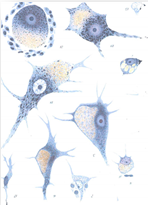
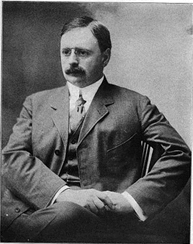
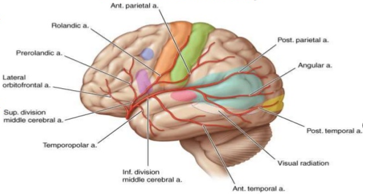
 Scientia Ricerca is licensed and content of this site is available under a Creative Commons Attribution 4.0 International License.
Scientia Ricerca is licensed and content of this site is available under a Creative Commons Attribution 4.0 International License.